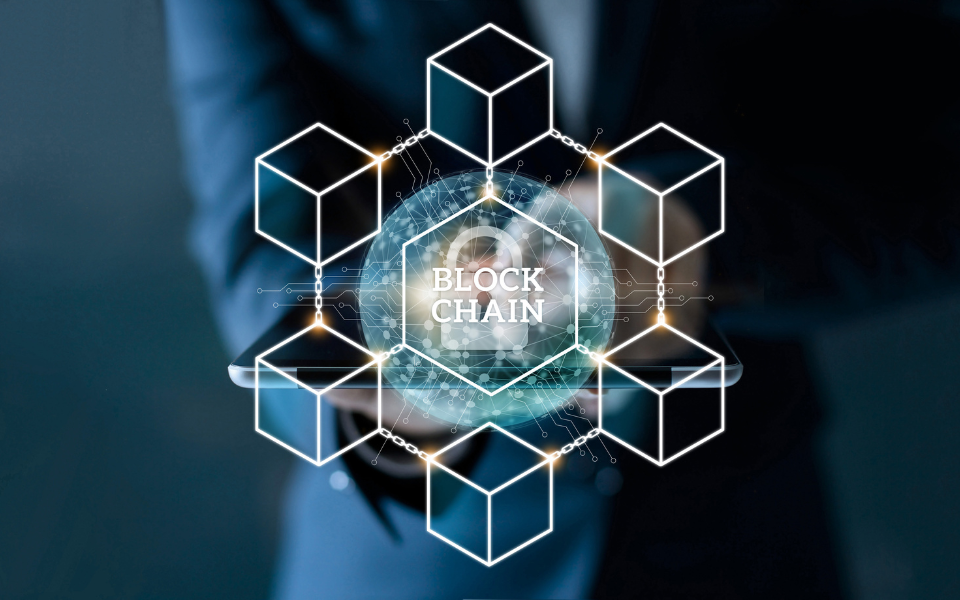Introduction
Blockchain technology in 2025 continues to disrupt multiple industries, providing enhanced security, transparency, and decentralization. With innovations in Web3, smart contracts, and decentralized finance (DeFi), blockchain is transforming finance, supply chains, healthcare, and data security. This blog explores the key applications, benefits, challenges, and future trends shaping blockchain’s evolution.
What is Blockchain Technology?
Blockchain is a decentralized, distributed ledger that records transactions securely and transparently across multiple nodes.
Key Features of Blockchain:
- Decentralization: No single entity controls the network.
- Transparency: Public ledgers allow for auditability.
- Immutability: Transactions are tamper-proof once recorded.
- Smart Contracts: Self-executing contracts automate transactions.
Key Applications of Blockchain in 2025
1. Decentralized Finance (DeFi) & Cryptocurrencies
- Blockchain-powered lending, borrowing, and trading platforms.
- Stablecoins and Central Bank Digital Currencies (CBDCs) reshape global payments.
- AI-driven smart contract automation enhances DeFi efficiency.
Example: Ethereum 2.0’s transition to proof-of-stake (PoS) improves transaction scalability and security.
2. Supply Chain Transparency & Logistics
- Blockchain-enabled tracking systems provide real-time data on goods.
- Smart contracts ensure contract compliance and fraud prevention.
- AI-integrated blockchain predicts demand and optimizes logistics.
Example: Walmart and IBM use blockchain for real-time food safety tracking.
3. Healthcare & Medical Data Security
- Blockchain secures patient records and prevents data breaches.
- AI-driven health data analysis enhances predictive healthcare.
- Decentralized identity verification improves patient consent management.
Example: Hospitals integrate blockchain-powered patient health records for seamless cross-hospital access.
4. Digital Identity & Cybersecurity
- Blockchain prevents identity theft and fraud with self-sovereign identities.
- Decentralized authentication replaces traditional password-based systems.
- AI-powered fraud detection improves online security.
Example: Governments issue blockchain-based digital IDs to enhance cybersecurity and citizen authentication.
5. NFTs & the Creator Economy
- NFTs (Non-Fungible Tokens) empower artists and content creators.
- Smart contracts automate royalty payments for digital assets.
- AI-generated NFTs introduce programmable digital art.
Example: Platforms like OpenSea and Rarible expand NFT marketplaces for gaming, music, and virtual assets.
6. Blockchain in Governance & Voting Systems
- Secure, transparent e-voting systems eliminate election fraud.
- Blockchain ensures tamper-proof public records and land registries.
- AI-powered fraud prevention mechanisms strengthen democratic processes.
Example: Governments explore blockchain-based e-voting to increase election integrity.
7. Green Blockchain & Sustainability Initiatives
- Energy-efficient PoS and carbon-negative blockchain networks emerge.
- AI-enhanced blockchain tracks carbon footprints and energy consumption.
- Decentralized renewable energy trading enables peer-to-peer transactions.
Example: Companies like Ethereum and Cardano prioritize eco-friendly blockchain solutions.
Benefits of Blockchain Expansion
1. Enhanced Security & Fraud Prevention
- Decentralization prevents data manipulation and unauthorized access.
- Immutable records make data tampering nearly impossible.
2. Cost Savings & Operational Efficiency
- Smart contracts reduce administrative costs in finance, insurance, and law.
- Blockchain eliminates intermediaries, reducing transaction fees.
3. Greater Transparency & Trust
- Public ledgers ensure verifiable, real-time transactions.
- Blockchain reduces corruption and enhances corporate accountability.
4. Global Financial Inclusion
- Decentralized finance (DeFi) enables banking access for unbanked populations.
- Cryptocurrency-based remittances reduce cross-border payment costs.
Challenges of Blockchain Adoption
1. Regulatory Uncertainty & Compliance Issues
- Global regulations for crypto and DeFi remain fragmented.
- Governments debate legal frameworks for smart contracts and digital assets.
2. Scalability & High Transaction Costs
- Legacy blockchain networks struggle with slow transaction speeds.
- Ethereum 2.0 and Layer-2 solutions address scalability issues.
3. Security Risks & Smart Contract Vulnerabilities
- Smart contracts are prone to coding errors and hacking attacks.
- DeFi platforms face frequent security breaches and rug pulls.
4. Public Perception & Adoption Barriers
- Misinformation and skepticism slow mainstream blockchain adoption.
- Education initiatives are needed to bridge the knowledge gap.
Future Trends in Blockchain (2025 & Beyond)
1. AI & Blockchain Integration
- AI-powered smart contracts optimize automation and security.
- Machine learning-driven fraud detection enhances DeFi safety.
2. Multi-Chain & Cross-Chain Interoperability
- Bridges between blockchain networks improve data transfer and scalability.
- Polkadot, Cosmos, and Chainlink enable seamless multi-chain transactions.
3. Central Bank Digital Currencies (CBDCs) & Institutional Adoption
- Governments launch national digital currencies for regulated blockchain payments.
- Banks integrate blockchain for instant settlements and remittances.
4. Metaverse & Web3 Expansion
- Blockchain-powered virtual worlds enhance digital asset ownership.
- Decentralized apps (dApps) dominate Web3 infrastructure.
5. Sustainable & Energy-Efficient Blockchain Solutions
- Eco-friendly consensus mechanisms (PoS, Proof-of-Authority) replace PoW.
- Carbon-neutral blockchain initiatives reduce environmental impact.
Conclusion
Blockchain technology in 2025 is reshaping finance, security, supply chains, and digital governance. With continued advancements in DeFi, AI integration, and sustainability, blockchain’s potential is expanding beyond cryptocurrency.
What’s Next?
Are you ready for the blockchain revolution? Stay updated on smart contracts, Web3 innovations, and decentralized applications.














